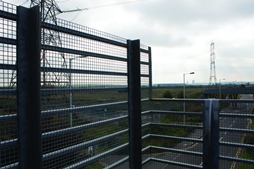The History of Stainless Steel
27-11-2019
THE BACKGROUND
The “discovery” of stainless steel happened early in the 20th century, around 1900 -1915. Yet, as with many discoveries, it followed the accumulated efforts of several individuals and the cogs were set in motion by Englishmen Stoddard and Farraday around 1820. In 1821 a Frenchman named Pierre Berthier (1782-1861) found that iron when alloyed with chromium was more resistant to acids than chromium-free iron and that the resistance increased with increasing chromium content.
In 1872, Messrs. Woods and Clark applied for a British patent for what they identified as an acid and weather resistant alloy containing 30 to 35% chromium and 1.5 to 2% tungsten. But the real development came in 1875, when another Frenchman named Brustlein recognized the importance of carbon levels in addition to chromium. Brustlein pointed out that in order to create an alloy with a high percentage of chromium, the carbon content must remain below around 0.15%. While many others investigated the chromium/iron composition, the difficulty in obtaining the low carbon levels persisted for many years, and It wasn’t until 1895, when Hans Goldschmidt of Germany developed the aluminothermic reduction process for producing carbon-free chromium, that development of stainless steels became a reality and low carbon ferrochrome became commercially available.
THE DISCOVERY
In 1904, French metallurgist Leon Guillet (1873-1946) published research on alloys with composition that we know today as 410 – 420 – 442- 446 and 440-C. In 1906, he also published a detailed study of an iron-nickel-chromium alloy that is the basic metallurgical structure for the 300 series of stainless steel.
In 1909, Giesen published in England a lengthy account on the chromium-nickel (austenitic 300 series) stainless steels. Also, in England and France, Portevin published studies on an alloy that is now regarded” 430” stainless steel.
However, it was in 1911 in Germany that Monnartz & Borchers found evidence of the relationship between a minimum level of chromium (10.5%) on corrosion resistance as well as the importance of low carbon content and the role of molybdenum in increasing corrosion resistance to chlorides.
INDUSTRIAL DEVELOPMENT
Englishman Harry Brearley (born in Sheffield in 1871) was appointed principal researcher at Brown Firth Laboratories in 1908. In 1912 Brearley set out to create an erosion resistant steel, not a corrosion resistant one, and began experimenting with steel alloys containing chromium. During these experiments Brearley made several variations of his alloys, ranging from 6% to 15% chromium with differing measures of carbon. The following year, Brearley created a steel with 12.8% chromium and 0.24% carbon. In order to analyse the potential resistance of his steel samples to chemical attack, Brearley tested its resistance with various corrosive agents including lemon juice and vinegar and was amazed to find that his alloys were still highly resistant, and immediately recognising the potential for his steel within the cutlery industry.
However, many other nationalities lay claim to the discovery of stainless steel, Germans, Americans and Polish and more recent claim from the Swedes. And although there is much mystery and speculation behind the discovery of stainless steel, there is no doubt that without the combined efforts of all these scientists and metallurgist, stainless steel would not exist today.
APPLICATIONS
Stainless steel is used in buildings and was very much in vogue in the 1930’s, the most famous example of this is the Chrysler Building which has its entire upper portion made of stainless steel.
Today, there are over 150 grades of stainless steel, of which fifteen are most commonly used. Stainless steel can be made into coils, sheets, plates, bars, wire and tubing and is used in cookware, cutlery, hardware, major appliances, industrial equipment, automotive and aerospace, in surgical instruments and a multitude of other applications.
Our very own Pro-Railing® is a stainless steel handrail component system designed to help create stunning handrails or balustrades in all types of applications. Available in stainless steel grade 304, 316 and Duplex 2205 and in either a satin or mirror finish, the range is designed with simplicity of use in mind, offering maximum flexibility and allowing for the quick installation of complex and attractive stainless steel railings and balustrades.Visit the F H Brundle website for more information on The History of Stainless Steel






